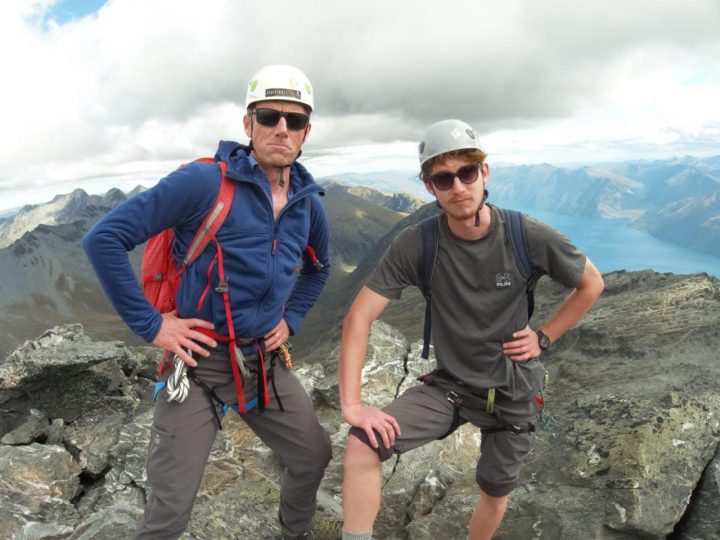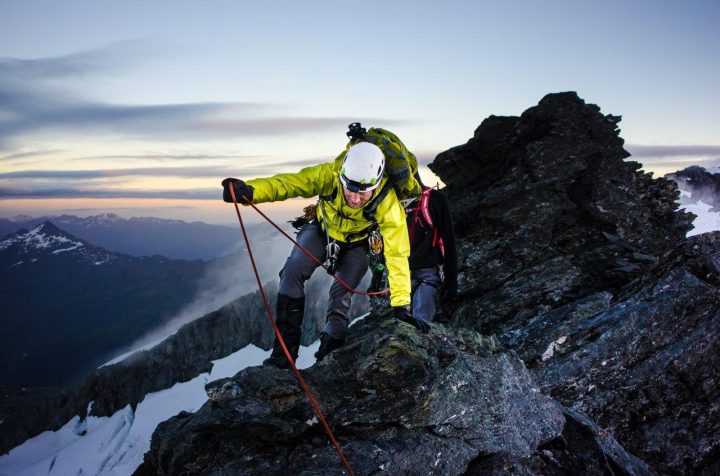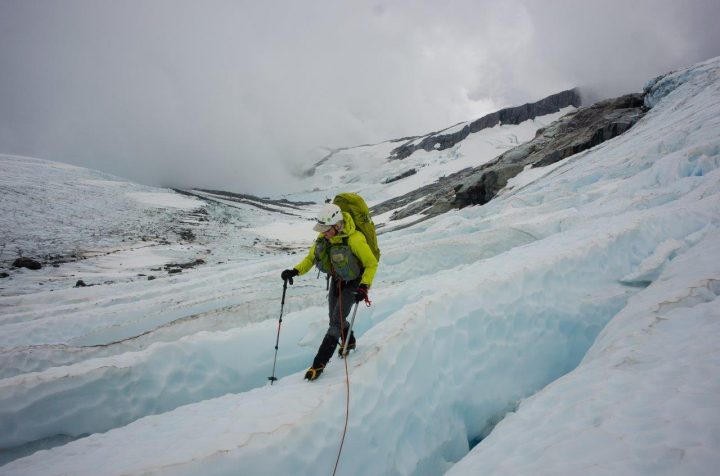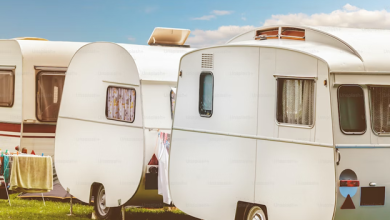
Midlife – love it or hate it, it just happens. The simple result of staying alive for longer than forty or so years. It is too often associated with the word “crisis”. I’ve decided that a more apt term is “mid-life focus”.
So, with my forties all but behind me, I allowed a little bubble of ambition to grow into a solid plan. I’ve always been one of those slightly track-resenting trampers, wanting to explore and push the envelope a little. Also, our son had moved to Wanaka and fallen in love with the mountains – spending every moment he could exploring and rock-climbing. The time seemed right to push beyond the limits of my tramping boundaries and do something altogether outside my comfort zone.
I decided to climb Mt Aspiring/Tititea, if my son would come too. What an epic adventure to share!

“Heck yeah!”
But we weren’t going to be stupid about it. We quickly found that Aspiring Guides in Wanaka had an eight-day course that included summiting Aspiring/Tititea, if conditions and skills allowed.
There are things you can control, and things you can’t. Fitness is one of the former. I received the suggested training schedule, and then, in my normal slightly obsessive way, decided that I was going to do much more – to exit my forties the fittest and strongest I’ve ever been. Ignoring the recommendation to start training two months before the climb, I started five months out. A Facebook search rewarded me with a group “Training for the New Alpinism”. Now I could ask advice of the super-human people who scale Himalayan death-monster peaks. Their holy text of the same name proved to be a 400-plus page book which enabled me to form my five-month plan to quite some detail. I couldn’t wait to get started.
I’ve always been a skinny guy. A friend once said, on seeing me in shorts “Matt, you’ve got lucky legs” Huh? “You’ll be lucky if they don’t snap off and go up your crack!”. Well, those legs were in for a shock – the rest of me as well.

Alpine fitness training involves many different elements, including “maximum strength training”. One exercise is the classic overhand pull-up. I could manage a few but started the program to improve. It involved adding more and more weight to my body as I did them. Over eight weeks, I strengthened until I could perform three pull-ups with a 30.5kg pack on my back. I was shocked. The same with weighted press-ups, leg raises, squats, everything. My shape changed. My pants started getting tight around my calves and thighs, but loose around my waist.
The other major part of the training was building my aerobic fitness. I bought a sport watch with heart rate monitoring and did the hateful “maximum heart-rate test” – basically sprinting up a hill until you taste blood and want to die. From this I calculated HR zones for training. I ran for long periods, ridiculously slow, keeping my HR down in the target zone. It felt stupid. But it was working. My pre-training “Alpine Combine” aerobic and strength test put me in the “poor” zone. The next test was “good”.

I was growing to love training. Midlife aches were receding as my core strength improved. The new strength made life in general easier. I was enjoying eating more and more to keep my weight up.
Then “muscle endurance training” started. It was November, two months to the climb, and it was the hottest November in memory. It’s all very well if you live near mountains – you can train in them. But I live in the humid, subtropical north. The highest local steep hill was only 150m elevation. I started the eight weeks doing 600m elevation-gain sessions, carrying 10kg up and down my 150m hill. Then gradually increasing up to 16kg and 1600m in a session. I would consume three litres of electrolytes, and still finish dehydrated. I had to hose the sweat out of my training pack. And then I started training in technical boots with rigid soles. A whole new hateful world.
It all worked. My resting HR was 55. Walking up a hill felt the same as flat ground. On my peak training day I carried 15kg (a generous climbing weight) 29 kilometres in seven hours on rough track with 1400m elevation gain – and happily could still walk the next day.
I feared I had over-trained. Was it all just a bit silly?
As the date approached, my excitement grew. Gear was checked and rechecked. I obsessed about the weather forecast.

As instructed, I tapered my training 10 days before the course. It was nice not feeling as if I was always in recovery from the latest workout. Then after four days, my legs became restless- they felt like they wanted to take themselves for a run up a steep hill. I wanted to GO!
Finally, I was in Wanaka and the first day of our course arrived. We quickly could see that Aspiring Guides were a great outfit. Our guide, Cristina was excellent but the weather was not. After a November and December of perfect conditions, a slow-moving trough sat in the Tasman and promised to pump a strong moist northerly onto the mountain for most of the eight days of our course.
Each morning we would spend time at the heliport hoping for that little break so we could be helicoptered up to Bevan Col for a glacier walk across to Colin Todd hut, bolted onto a rocky ridge at the base of Aspiring. It never happened. After a couple of days rock-climbing instead (one on the Remarkables, which was actually fantastic), we decided to walk in. That involves ascending 1500m from the valley floor. We were carrying 20kg each – food for six days, and all the gear, technical and not. We set off from Raspberry Flat on the third afternoon and ground up French Ridge to the eponymous hut for the first night.
The next day we spent time on the ice slopes below Quarterdeck Pass, learning the basics of self-arrest, crampon use, glacier travel. Coming over the pass onto the Bonar Glacier was entering a brand-new world. This was what we’d signed up for and trained for!
Negotiating the crevasses as we wound our way to Colin Todd hut was like walking on the moon. Every step counted. We arrived at the empty hut with the wind and rain. We were not to leave for three days.

Three days. When it became obvious that we were hut-bound for a while, we decided it was simply our “Alpine Resort”. We had ample food (and the luxury of our guide cooking for us). All fresh, spicy, tasty goodness. Good company, books to read, cards to play, lots of time to practice rope skills such as crevasse-rescue and have theory lessons on important topics such as avalanche awareness. Each evening we would be radioed a weather report from Aspiring Hut down in the valley. Tantalizing possibilities of the wind reducing below gale were proffered, only to be denied. After three days we managed to get out for a couple of hours to practice more crampon skills and snow/ice anchors.
Fortunately, Cristina generously offered to extend our trip because a good forecast arrived! Clearing skies at midnight with light winds. We had been so sorely weather-teased that we couldn’t really believe we might actually get to climb this gale-hidden mountain that we had spent days on the flanks of – but had never seen. It would mean either a chopper out after our climb, or a big long “extra” day if we had to walk out.
Three am saw us up, a quick breakfast with coffee then a gear check, gear up and out into the darkness. We could see stars! We head-lamped up the mildly-crevassed Iso glacier first – a bit quicker than Shipowner Ridge. Once on the rocky Northwest ridge of Aspiring, an eastern glow heralded the morning. As we climbed in the growing light it was as if entering a magical kingdom – the world falling away beneath our feet, as the glaciers below us were flushed with the dawn. It was biting-the-back-of-your-hand-to-stop-yourself-from-crying beauty.
Soon the world was alight, and we could see forever – ocean, Aoraki, Earnslaw all coming into view. Our climb continued, the summit stark and close. Some scrambling, some short faces needing rope-protection, some parts just careful walking. The air did seem thinner and colder. We were breathing faster, but each step was a pleasure. I was spending savings I had squirreled-away into my fitness-account for months. And then crampons back on for the final crunching up the ice-cap to the summit.
Then there was no more up. Only the delight of our elevation – a making of a father-son memory. Cristina was ecstatic for us, loving the moment too. I tried to avoid standing on the very highest point, to respect the mountain. We hadn’t conquered it. We were simply visiting.
Then the descent with happy hearts. The tension gone, but no room for a silly mistake. We were returning from an enchanted realm. We negotiated a bergschrund to access an icier descent route, but inexperience in crampons on the mix of sloping ice and rock denied us the time savings intended – we had a helicopter to meet at Bevan Col. As we descended and saw the cloud seeping up from the valley it was clear that was not going to happen.
We arrived back at the hut to congratulations from the dozen people who had appeared as if from nowhere – spotting the weather-window. A helicopter for early next morning was planned, but if not possible, we would be doing an epic day – two days of descent squeezed into one.
We woke to cloud, wind and rain – so no helicopter. We navigated across the glacier in visibility under ten metres, making use of GPS, but still having to back-track out of a crevasse-field. Once we were over the lip of Bevan Col the steep descent on ice and rock was pure adventure! This was as exciting as our summit day. Our eyes were shocked by the first green plants – we had seen nothing but rock and ice for a week.
Descent included rappelling down wet slabby rock. It was like slipping into a warm bath as heat and humidity returned. We reached the valley floor after eight hours then had the 18km walk out. Food had run out – we did this big extra day on a breakfast of some dregs of dried fruit and then four muesli bars for the journey. Again, I was so glad of the training (muscle endurance days were done on minimal food – to train energy-mobilisation
Funny what your brain stores away – at Aspiring Hut en route a memory returned of walking to it as a ten-year-old and seeing people carrying ropes and ice-axes, as adults talked in revered tones of “those climbers”. My wide-eyed child self would have been wowed by the thought that I, with my son, might one day join the ranks of Aspiring-climbers. What subconscious influence did this have on my mid-life focus?
But we DID it! It was briefly disorientating getting back to the gentle bustle of Wanaka late that evening, until the joy of pizza and beer took over. Never had we been so hungry!
I woke the next morning in a comfy, soft, sheeted bed, but in a strange state of fear and shock. It seemed my subconscious had woken me. I’d spent the past week hanging off things and taking risks unusual for me. I usually had struggled with fear of heights but had not had any problem on the mountain. Well, my subconscious was complaining now! “Seriously! What were you thinking – doing that stupid stuff?”
“Get used to it mid-life brain – it wont be the last time…”
Photo details: All photos credited to Cristina Pogacean,








